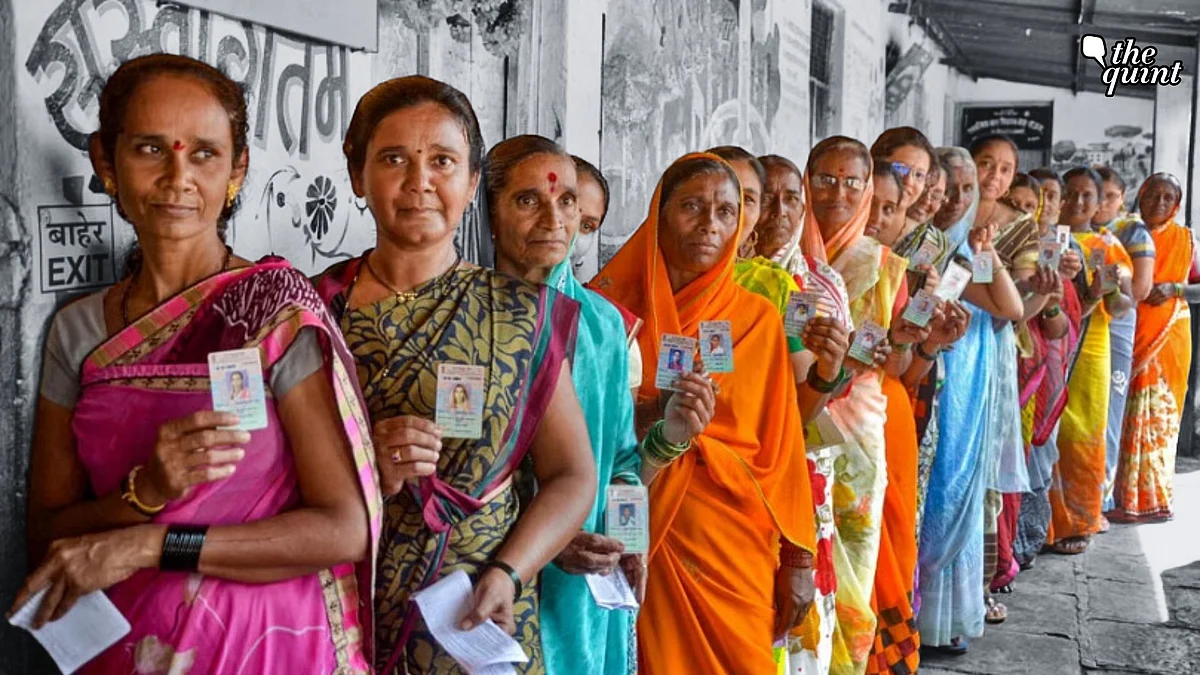
Did Maha Govt Give Rs 450 Cr to 'Ineligible' Laadki Bahins? Who Pays?
The Maharashtra government recently declared 5 lakh beneficiaries of the Laadki Bahin scheme 'ineligible'.

advertisement
Video Editor: Kriti Saxena
Maharashtra's Women and Child Development minister and Nationalist Congress Party (NCP) leader Aditi Tatkare declared that five lakh women, who were the beneficiaries of the state's much talked about Laadki Bahin Yojana, have been declared 'ineligible'.
The scheme, that has much been credited for the victory of the ruling Bharatiya Janata Party (BJP)-led Mahayuti alliance in the state, was being availed by 2.46 crore women of Maharashtra who have received six installments of the scheme by December 2024.
However, the state government is currently scrutinising the beneficiaries after alleged complaints of many flouting the eligibility criteria to avail the scheme, such as the family income, age limit, and being beneficiaries of other direct cash transfer schemes.
There are more than 2.43 crore beneficiaries of the Ladki Bahin Yojana, costing the exchequer Rs 3,700 croreevery month and Rs 45,000 crore annually.
How Did Lakhs of Flawed Registrations Take Place?
The cross-verification of beneficiaries was started by the state government in January, which Tatkare said was an exercise being conducted after 'bogus' beneficiaries came to light.
There are certain requirements to be elegible for the scheme
The beneficiary must be between 21 to 65 years of age
The combined annual family income must not be more than Rs 2,50,000.
No family member must be an income taxpayer or employed by the state/central government
No family member must have a four wheeler (except for a tractor) registered in their name.
The applicant must not a beneficiary of any other government scheme
According to Tatkare, the five lakh women being declared ineligible failed to meet some of these criteria. The details of the beneficiaries who were declared ineligible are as follows:
Women beneficiaries of Sanjay Gandhi Niradhar Yojana: 2,30,000
Women above 65 years of age: 1,10,000
Women who are beneficiaries of Namoshakti Yojana and have four-wheelers in the name of family members, but voluntarily withdrew their names from the scheme:1,60,000
Total ineligible women: 5,00,000
According to several reports, the state government, meanwhile, is also waiting for data from the Income Tax Department on the beneficiaries of the scheme to establish which of the beneficiaries have flouted the Rs 2.5 lakh annual income norm. Consequentially, the number of women being dropped out of the scheme is only expected to rise.
However the scrutiny of beneficiaries raises some key questions:
How many women of the 1.1 lakh being dropped for incorrect age crossed the age of 65 after they started receiving benefits?
How many of these 1.1 lakh women being dropped for incorrect age, submitted wrong age proofs?
Why did it take six installments to be doled out before such blunders came to light? Why were thorough reverification drives not launched before Rs 21,600 crore were doled out for 6 months?
If the beneficiaries are not to return the money, how will the losses to the tune of hundreds of crores to the state's exchequer be recovered?
Ministerial, bureaucratic, or ground level officials - who is accountable for the 'blunders'?
Several activists and social workers on the ground, who helped women register for the scheme online, said that physical verification of claims like ownership of a four-wheeler vehicle was not conducted before the ongoing exercise.
The laxity in the verification process can also be highlighted by the fact that a woman claimed to be a Bangladeshi national also reportedly received at least two installments of the Laadki Bahin scheme, as per a report by Hindustan Times. The fact came to light in January this year after the Mumbai Crime branch reportedly arrested her along with four other Banglaeshi nationals living illegally in Mumbai. The nationality of the woman is still contested in the courts.
Can the State Afford These Losses?
By January, 2.46 crore women had been provided a collective assistance of Rs 21,600 crore under the Laadki Bahin scheme. The state government, however, maintains that the scheme is not creating additional burden on the exchequer.
Responding to a petition by social worker Anil Vadpallivar in the Nagpur bench of the Bombay High Court in January, the state government said that the claims of the scheme hindering other policy decisions of the state are "baseless," Loksatta reported.
However, certain recent steps by the Devendra Fadnavis government, and several voices from the ruling dispensation and the state's bureaucracy, indicate otherwise.
Earlier in January, NCP leader and Maharashtra Agriculture Minister Manikrao Kokate said that the burden of the scheme has affected decisions on farm loan waivers.
While speaking to the media earlier in January, Kokate had said that women must decide between availing benefits of either Laadki Bahin scheme or the PM Kisan Yojana. "They will not be able to avail benefits of both," he said.
In January, the state government issued a GR to announce formation of a panel under Minister of State for Finance Ashish Jaiswal to evaluate and streamline ongoing schemes.
Meanwhile, amid backlash from the state's Opposition leaders, Maharashtra CM Devendra Fadnavis on 8 February said: "Only those who flouted the norms during registration are being acted against. I am happy that some of my sisters have volunteered to not avail benefits as they didn't meet the required norms. We have neither withdrawn any benefits nor will we ask anyone to return any money. But at the same time, we are custodians of people's money and we are answerable to the CAG. The CAG is ought to object if those not meeting the required criteria are benefitting from the scheme. Hence, we will have to stop those incorrectly availing benefits but we have not changed any existing rules for this."
- Access to all paywalled content on site
- Ad-free experience across The Quint
- Early previews of our Special Projects
Published: 13 Feb 2025,09:19 AM IST